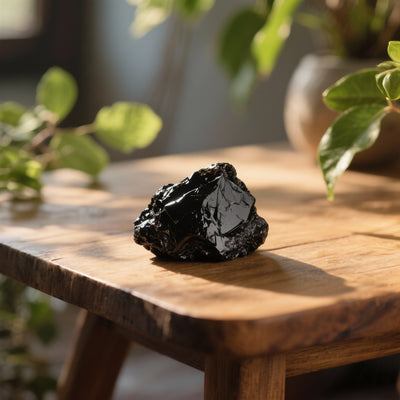The 8 recovery mistakes that every athlete makes (and that Shilajit can correct)
Are you training relentlessly, but your results have plateaued? The problem might not be your effort, but your recovery. Discover the mistakes that are sabotaging your progress and how a Himalayan treasure can change everything.
The equation for athletic performance seems simple: intense training + rest = progress. Yet, many athletes, both amateur and professional, hit an invisible wall. They train harder, but don't get stronger or faster. The missing piece of the puzzle? Truly optimized recovery. Recovery isn't passive; it's an active process that can either amplify the benefits of your training or completely negate them.
In this article, we'll dissect the 8 most common recovery mistakes that are holding you back. More importantly, we'll explore how Shilajit , an ancient mineral resin, acts as a true conductor to harmonize and correct these systemic flaws.
Mistake #1: Neglecting the quality (and quantity) of sleep
This is the most fundamental mistake. You can have the perfect diet and training program, but without sufficient, restorative sleep, your body cannot rebuild itself. It is during deep sleep that growth hormones (HGH), essential for muscle repair and protein synthesis, are released. Poor sleep also increases cortisol, the stress hormone, which is catabolic (it breaks down muscle).
How Shilajit helps:
Shilajit is not a sleeping pill. It's an adaptogen . It helps your body better manage stress by regulating cortisol levels. A balanced stress system promotes faster sleep onset and deeper, more restorative sleep. Furthermore, its high magnesium and other calming mineral content contributes to the relaxation of the nervous system, an essential condition for a good night's sleep.
Mistake #2: Ignoring hydration and electrolyte balance
Even mild dehydration (1-2% of body weight) can lead to a drastic drop in performance and slow recovery. Water is crucial for transporting nutrients to muscle cells and eliminating metabolic waste. But water alone isn't enough. When you sweat, you lose vital electrolytes (sodium, potassium, magnesium) that regulate nerve and muscle function. Cramps are just the tip of the iceberg.
"A water loss of just 2% can reduce muscle strength by 10% and endurance by nearly 20%."
How Shilajit helps:
Shilajit is a natural source of over 85 minerals and trace elements in their ionic form, making them highly bioavailable. Its main component, fulvic acid , acts as a carrier, enhancing the absorption of these minerals and water at the cellular level. It helps to rapidly restore electrolyte balance, ensuring optimal cellular hydration far superior to that of water alone.
Mistake #3: Inadequate post-workout nutrition
After intense exercise, your muscles are like sponges, eager for nutrients to repair and strengthen themselves. Many athletes make the mistake of waiting too long before eating, or consuming the wrong types of nutrients. It's essential to provide your body with a combination of protein for muscle fiber repair and carbohydrates to replenish depleted glycogen stores.
How Shilajit helps:
Shilajit is not a source of macronutrients, but it optimizes their utilization. Fulvic acid improves cell wall permeability, meaning that the nutrients you consume (such as the amino acids in protein) enter muscle cells more efficiently. It acts as a nutrition amplifier, ensuring that every gram of protein and carbohydrate is used to its fullest potential for recovery.
Mistake #4: Lack of essential micronutrients
We focus on proteins, carbohydrates, and fats, forgetting that dozens of biochemical reactions crucial for recovery depend on vitamins and minerals. Zinc is vital for testosterone production, magnesium for muscle relaxation, iron for oxygen transport... Depleted soils and modern diets are making these deficiencies increasingly common, even among attentive athletes.
How Shilajit helps:
This is where Shilajit truly shines. It's considered one of the most complete natural sources of minerals and trace elements. By providing a broad spectrum of these micronutrients, Shilajit fills in the invisible nutritional gaps that can sabotage your recovery and performance, supporting everything from energy production to bone health.
Error #5: Omitting active recovery
Collapsing on the sofa after a hard workout isn't always the best strategy. Active recovery, such as light walking, low-intensity cycling, or dynamic stretching, promotes blood circulation. This helps to more quickly remove lactic acid and other metabolic waste products from the muscles, reducing soreness and accelerating repair.
How Shilajit helps:
Shilajit supports cellular energy production by improving mitochondrial function and increasing ATP production (the cell's energy). With more cellular energy available, you feel less exhausted, making active recovery more accessible and less strenuous. It gives you the energy to recover effectively.
Mistake #6: Managing inflammation with painkillers
Inflammation is a natural and necessary response to training. It's the signal that triggers repair processes. However, chronic or excessive inflammation can become problematic. The mistake is to rush to use non-steroidal anti-inflammatory drugs (NSAIDs), which, by blocking this process, can actually hinder long-term muscle adaptation and have harmful side effects.
How Shilajit helps:
Shilajit possesses powerful natural anti-inflammatory and antioxidant properties. It helps modulate the inflammatory response without completely blocking it. It combats excessive oxidative stress generated by intense exercise, protecting cells from damage and promoting an environment conducive to healthy and effective repair.
Mistake #7: Experiencing chronic stress (physical and mental)
Your body doesn't differentiate between the stress of an intense workout, a grueling workday, or personal worries. The result is the same: high cortisol production. Chronically elevated cortisol levels put your body in a permanent catabolic state, hindering recovery, promoting fat storage, and decreasing performance.
How Shilajit helps:
As a potent adaptogen, Shilajit's primary function is to help the body adapt to and resist stress, whether physical or psychological. By helping to regulate the HPA (hypothalamic-pituitary-adrenal) axis, it helps maintain healthier cortisol levels, creating an anabolic (building) rather than a catabolic hormonal environment.
Mistake #8: Ignoring your body's signals (overtraining)
Persistent fatigue, decreased performance, sleep disturbances, increased irritability... These are signs of overtraining. It's the result of a prolonged imbalance between the stress of training and the body's recovery capacity. The mistake is believing you should "push through the pain," when your body is actually demanding rest.
How Shilajit helps:
By optimizing all the facets of recovery mentioned above (sleep, nutrition, stress management, energy), Shilajit increases your body's overall ability to recover. It raises the threshold at which training becomes excessive. It helps you better handle the workload and recover more quickly, thus protecting you from overtraining and allowing you to train more consistently and effectively.
Conclusion: Recycling, an art supported by nature
Performance isn't built solely on effort, but above all on intelligent recovery. By correcting these eight fundamental mistakes, you'll unlock levels of progress you thought were unattainable. Shilajit Purlema isn't a miracle cure, but a powerful natural catalyst. It doesn't replace a healthy lifestyle, but it amplifies it, ensuring every aspect of your recovery functions at its full potential.
Are you ready to make your recovery your greatest asset?







